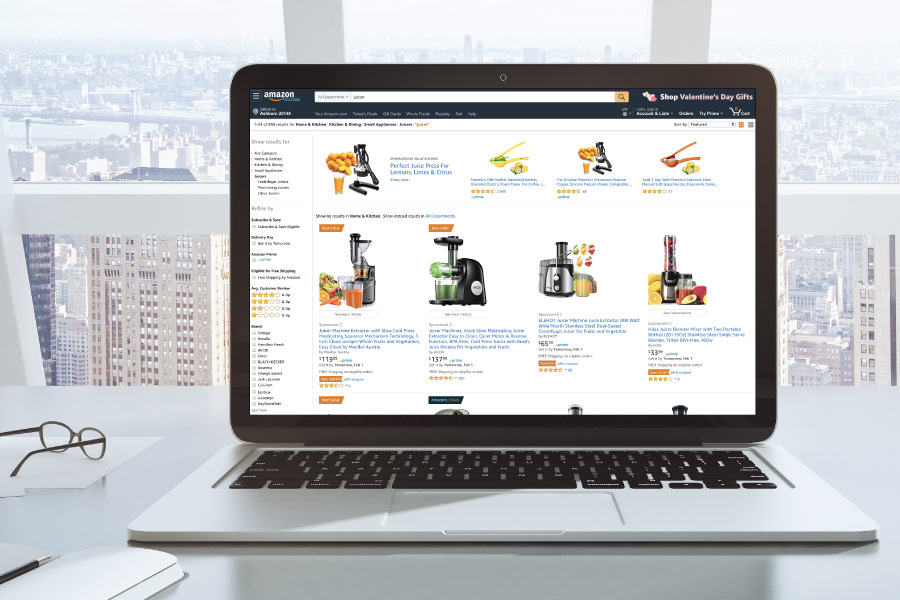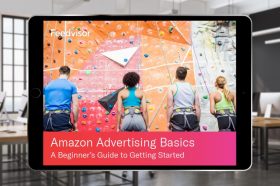Resources - Blog
Amazon Bidding Strategies for Advertising

Stay on top of the latest e-commerce and marketplace trends.
Advertising on Amazon is an auction system where sellers bid on search terms and the seller with the highest bid and is eligible for the Buy Box usually wins the auction. Then, when a shopper searches that term on Amazon, that ad will be served to them, creating an impression.
As a brand or retailer advertising on Amazon, you will not pay for the Sponsored Product or Sponsored Brand advertisement until the customer clicks on the ad itself. The PPC ads then drive customer traffic to Amazon product detail pages.
Sponsored Products Bidding
When it comes to picking the bidding strategy for your Sponsored Products campaigns, pick the one that aligns most closely with your campaign’s objective. This setting applies to all bids within the campaign.
1. Dynamic Bids – Down Only
With this strategy, your bids will be reduced in real-time for clicks that may be less likely to convert to a sale. For example, maybe you are advertising a watch and you have bid $1.00 for the keyword ‘running watch’. If Amazon sees an opportunity where your ad may be less likely to convert, such as a less relevant search query or a placement that does not perform well, they may lower your bid to $0.20 for that auction. Any campaigns created before October 2018 used this strategy.
2. Dynamic Bids – Up and Down
With this strategy, your bids will be increased for clicks that may be more likely to convert to a sale, and then lower them for clicks that may be less likely to. Your bids will not be increased by more than 100% for placements at the top of the first search results page, or by more than 50% for any other placement. Given that this strategy adjusts bids up and down according to the likelihood of a conversion, it may deliver a higher return on your ad spend compared to the other two strategies.
In this instance, if you are advertising the same watch from above and have bid $1.00 for the keyword ‘running watch,’ Amazon will look for opportunities where your ad is more likely to convert to a sale, such as the ad appearing for a highly relevant search query. Then, your bid might adjust to $1.40 for that auction. If it finds another opportunity that looks less likely to convert, your bid may be lowered to $0.20, for example, on that auction. Amazon can adjust bids of $1.00 up to a maximum of $2.00 for opportunities on top of the first results page, and up to $1.50 for all other placements.
3. Fixed Bids
With this strategy, your exact bid will be utilized for all opportunities and will not be adjusted based on the likelihood of a conversion.
Adjust Bids by Placement
When it comes to Sponsored Products, you can differentiate your bids and view the performance of these according to three placement groups: top of search, rest of search, and product detail pages. Top of search refers to the ads in the top of the first page of search results. Rest of search refers to the ads shown in the middle or at the bottom of the results page and in the second page of the results and beyond. Product detail pages refer to the placements on those pages, and certain other placements off search results like the Add to Cart page.
In addition to selecting a bidding strategy, you can also set bids according to placement. You can enter a percent increase (between 0-900%) to your base bid for two placements: top of search and product detail pages. When you do this, your bids will increase by the specified amounts when your ads compete for opportunities on those placements. It is for this reason that these placement adjustments are also referred to as placement multipliers.
This setting can be used to increase the visibility of your ads and generate additional impressions for a specific placement. It is important to note that it is possible that bidding by placement can negatively impact your ACoS, as you are bidding higher just for placement and not necessarily increasing conversion.
Final Thoughts
In order to establish a competitive bidding strategy, be sure that you are selecting the keywords that you believe are profitable and that perform well. With regard to campaign management, be sure to keep your ACoS goals front of mind to ensure that you are making steady progress toward your advertising KPIs.
The Amazon Advertising suite has a range of ad types and brand opportunities to help advertisers engage with shoppers throughout the sales funnel. We anticipate that as an increasing number of retailers and brands join the platform, Amazon will continue to expand their ad offerings to enable greater differentiation and exposure to a larger audience.
Learn what Feedvisor can do for your business.
When you partner with Feedvisor, you automatically receive access to our true, AI-driven technology and hands-on team of e-commerce experts. Contact one of our team members today to learn more about our end-to-end solution for brands and large sellers on Amazon, Walmart, and e-marketplaces.



